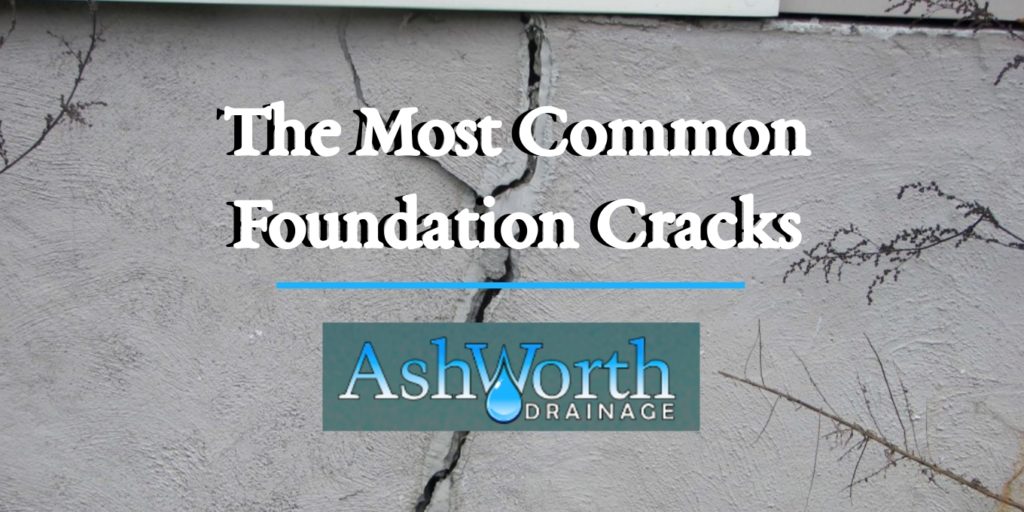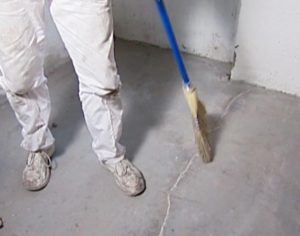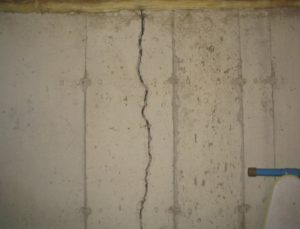The Most Common Foundation Cracks

Believe it or not, there are “types” of cracks that can form in your foundation. The different stresses on the basement wall materials can cause cracks to form in specific ways. Cracks caused by wall settling and shrinkage, and cracks in the basement floor, are all caused by different issues, and their treatment can depend on what they mean. Knowing what the cracks look like can lead us to the root of the problem and manage the cost to repair house foundation.
Basement Floor Cracks

Not all basement floors are alike – depending on how they are poured, cracks can form in the base in different ways. A floating slab is concrete poured over the gravel or dirt without any anchoring; a slab on grade foundation is when the large concrete floor is poured at the same time as the building footers on which the foundation rests, usually meaning there is no basement; and supported slab concrete is poured on compacted soil or gravel while resting on a ledge of concrete footing.
- Cracks in a floating slab are usually caused by settling in the soil or a shrinkage of the concrete, and these cracks can lead to water seepage and leaks. Usually, they won’t harm the structural integrity of the building.
- Cracks in slab on grade are usually caused by settling as well, but it’s the footing that’s settling; this is a cause of concern for the overall structure.
- Cracks in supported slabs can be caused by settling and improper reinforcement. This can be a major concern.
Knowing what kind of foundation crack you have can make a difference in how we approach repairs. Repairs like control joints can diminish the cracks caused by stress on the structure; polyurethane injections can seal up anything non-structural to prevent leaks. Combined with good drainage technology, you’ll keep water from getting into your basement.
Wall Settling Cracks
After a foundation is poured, the settling of the concrete and the soil around it can cause vertical and horizontal cracks, sometimes extending the length of the wall. These form if the footings of the foundation are poorly laid or aren’t reinforced, making the walls susceptible to the forces of horizontal loading and/or hydrostatic pressure. Most cracks will be vertical, but horizontal cracks can be caused by frost, the expansion of clay, or the concrete mix being unable to handle the “point load”, or the force on a specific point on the structure.
How these cracks are repaired all depends on the soil surrounding your foundation and the materials used. Helical  screw piers, steel pins, and other reinforcements might be needed, but they are quite costly and might not be expansive enough to solve all your problems. Reconstruction and basement waterproofing, like round stone treatment and weeping tile systems, can be the solution. Without the right repairs, epoxy resin won’t solve any severe problems.
screw piers, steel pins, and other reinforcements might be needed, but they are quite costly and might not be expansive enough to solve all your problems. Reconstruction and basement waterproofing, like round stone treatment and weeping tile systems, can be the solution. Without the right repairs, epoxy resin won’t solve any severe problems.
Shrinkage Cracks
When concrete “cures”, or going through the chemical reactions necessary for it to gain its structural integrity, it shrinks. Cracks form to relieve the internal stresses caused by shrinkage. How the concrete is poured, how it is reinforced, and the temperature swings during the curing process can determine how bad the cracking gets.
Shrinkage cracks won’t be structurally damaging, but they can lead to leaks, moisture, and flooded basements. Fill with epoxy resin injections or seal with patching compound to prevent larger issues. However, if you have brick foundation, shrinkage cracks can be indicative of structural problems that can lead to wall collapse; have an expert come in ASAP when you see cracks in a brick or stone!
